Weekly wild news from our reserves – 17 February 2023
Weekly wild news from our reserves – 17 February 2023
Susan Stone, Reserves Officer, has been taking soil samples from Martins’ Meadows and Carlton Marshes. Susan uses a pot corer especially designed for taking soil samples in grassland – the samples are then taken to a lab for testing. We’ll be looking at pH and also phosphorous levels which will indicate the health of the soil. Meadow soils are low in nutrients which checks the growth of nutrient-loving species (such as nettles) which would otherwise crowd out some of the diverse flora.
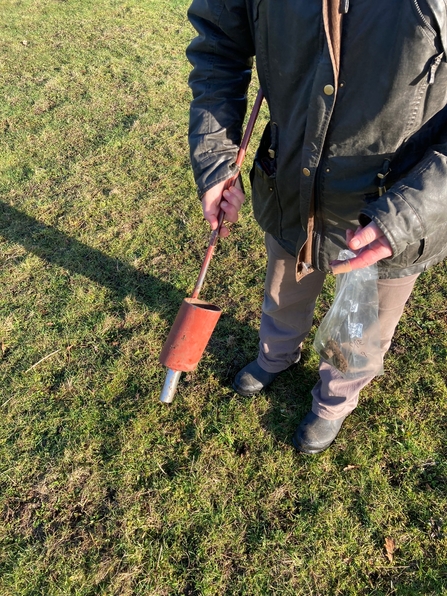
Susan Stone taking a soil sample at Martin’s Meadows – Ben Calvesbert
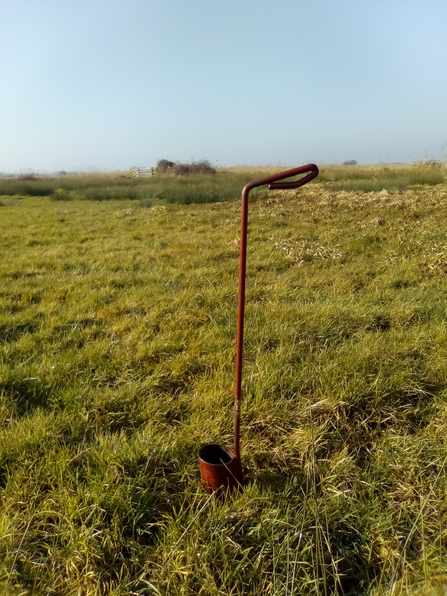
Soil sampling at Carlton Marshes, Susan Stone
Whilst taking soil samples at Carlton Marshes, Susan was amused by this brave heron. Susan explains, “Carlton was very busy with lots of people walking along the path - it was totally unphased – perhaps it was interested in the soil sampling! I asked the two ladies if they were OK to appear in the blog and they said yes. We had quite a chat and the heron was quite happy to listen and then nonchalantly flew a bit further down the path!”
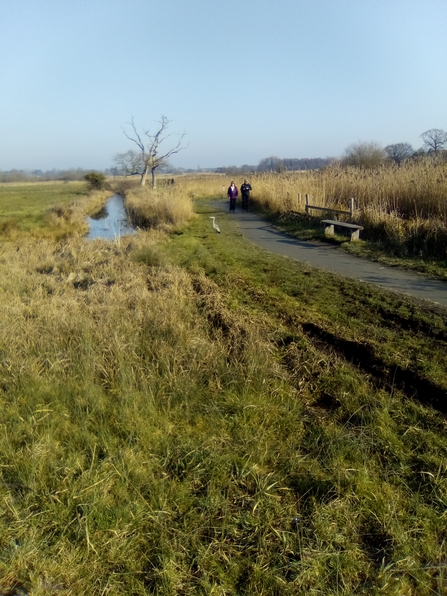
Heron at Carlton Marshes, Susan Stone
Bittern at Carlton Marshes
Bitterns are notoriously difficult to spot as they are so brilliantly camouflaged amongst the reeds. However, when flying, they are much more conspicuous. One of our visitors to Carlton Marshes, Dave Bonner, took these lovely photos of a bittern in flight.
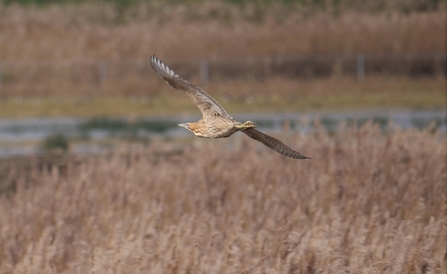
Bittern at Carlton Marshes, Dave Bonner
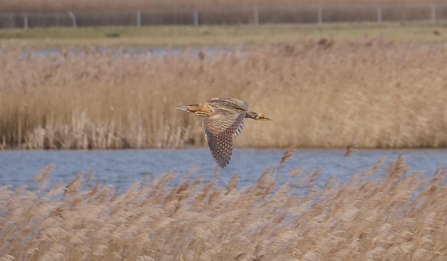
Bittern in flight, Carlton Marshes, Dave Bonner
Bullfinch calling at Foxburrow nature reserve
This isn’t the prettiest corner of Foxburrow, but Trimley warden Joe Underwood heard a bullfinch calling from the hedge and just had to record it. You can also hear a robin, great tit and also a green woodpecker.
Bullfinch calling at Foxburrow nature reserve, Joe Underwood (https://youtu.be/Pl_Bp57k6qQ)
Bullfinch calling at Foxburrow nature reserve, Joe Underwood
Foot drain creation at Dingle Marshes
North East Suffolk Sites Manager Matt Gooch captured this video of a foot drain being created at Dingle Marshes nature reserve. This has been funded by the Farming in Protected Landscapes partnership. The partnership has helped fund work across a number of reserves in Suffolk managed by Suffolk Wildlife Trust, RSPB, Natural England and the National Trust to create habitats that support wading birds - they favour feeding in shallow scrapes with muddy edges.
Foot drain creation at Dingle Marshes, Matt Gooch (https://youtu.be/2LGglOuth-o )
Foot drain creation at Dingle Marshes, Matt Gooch
The Softrak has been at Dingle too, cutting a section of reeds to provide structural diversity in the reedbeds.
Stag beetle pyramid at Trimley
Trimley’s brilliant band of volunteers have created a new stag beetle pyramid at the marshes. They began by digging a deep hole and placing large branches into it.
Once established, and the wood begins to rot down, these pyramids will provide habitat for reptiles, amphibians, fungi and a wide range of dead-wood invertebrates, including the impressive stag beetle.

Volunteer digging a hole for the deciduous branches, Trimley Marshes, Joe Underwood

Stag beetle pyramid in progress, Joe Underwood

The finished pyramid, Joe Underwood






